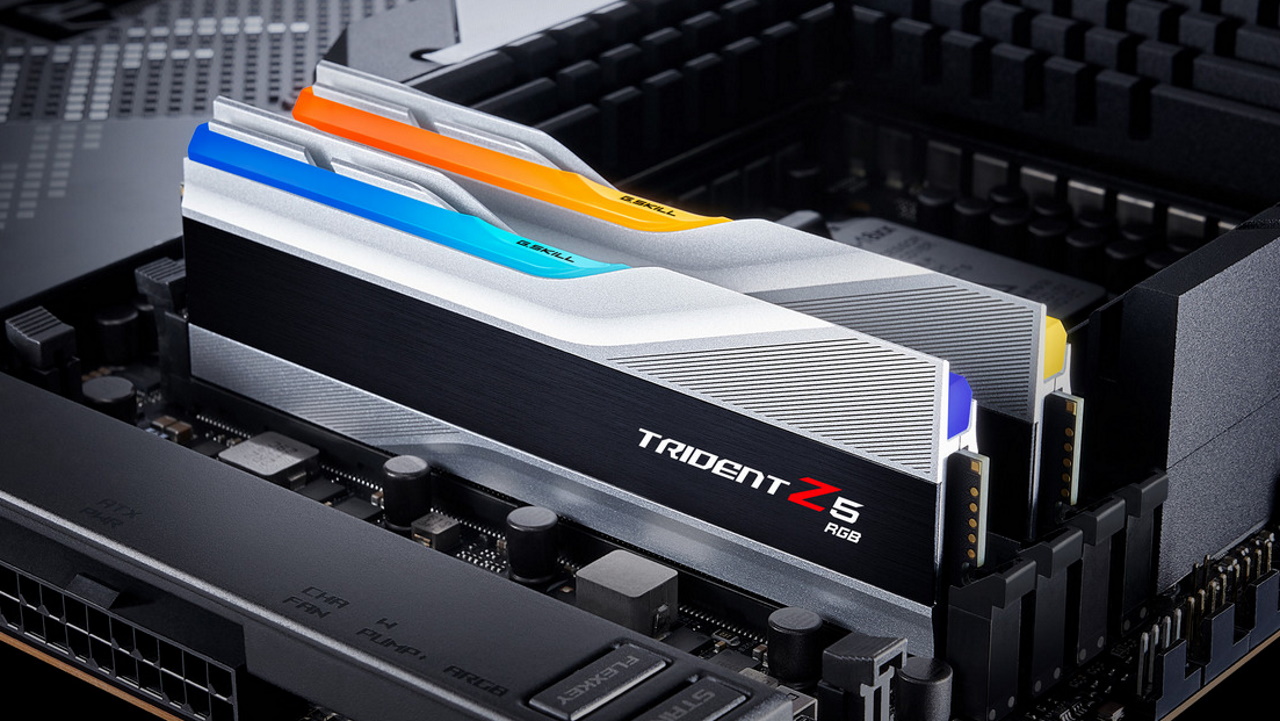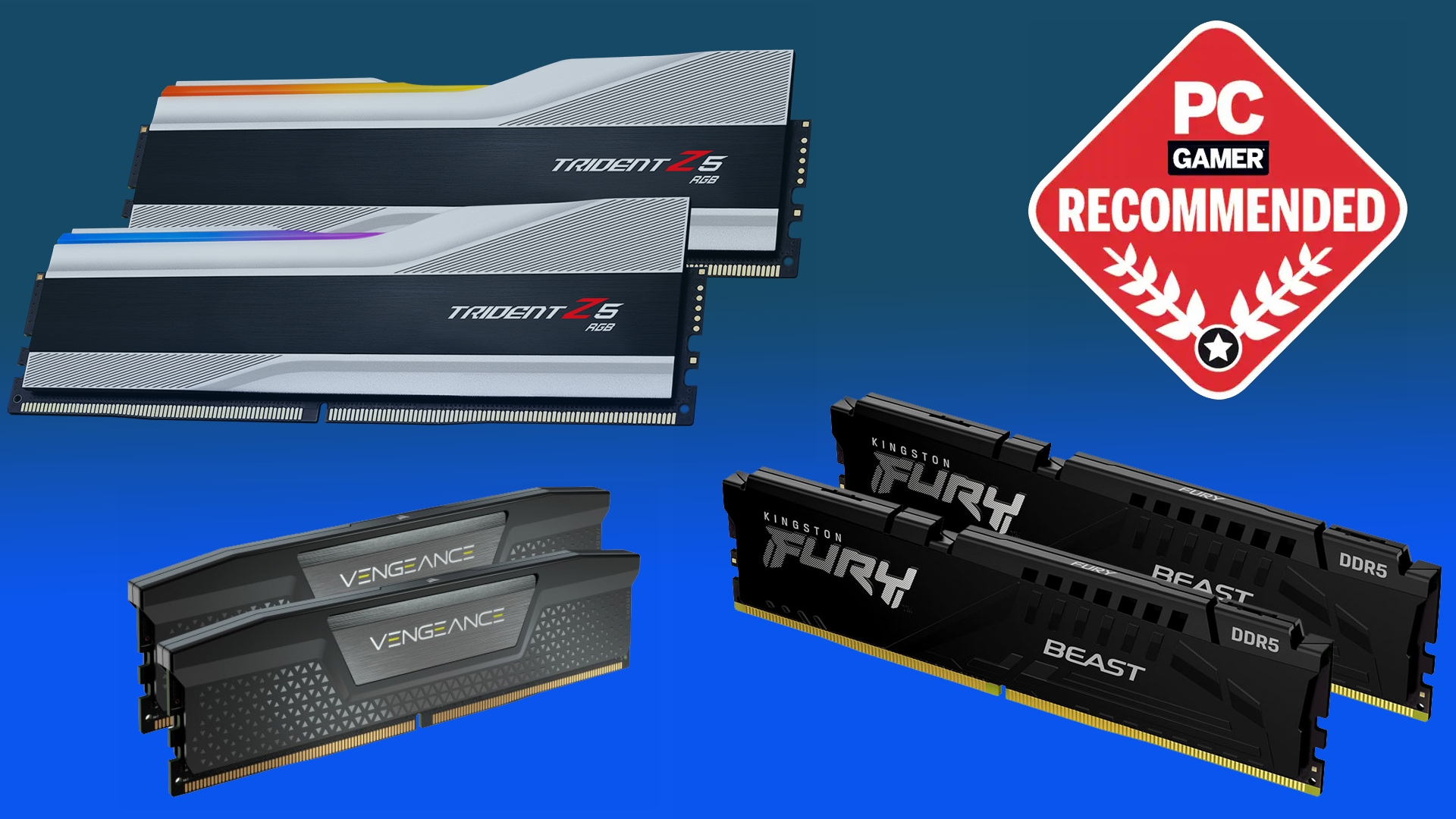DDR5 is finally relevant for PC gaming
Lower latencies and faster frequencies will finally make a difference to our frame rates.

Memory manufacturer, G.Skill, has just announced the first DDR5 memory sticks with a sub-30 CAS latency. The new DDR5 memory will appear under the Trident Z5 RGB, Trident Z5, and Ripjaws S5 brands, and will be available as 32GB (2x 16GB) and 64GB (2x 32GB) kits. You'll also get to pick from DDR5-5600 and DDR5-5200 frequencies, with both frequencies offering a CAS Latency of 28.
As the latencies drop, the real-world CAS latency of these kits actually challenges the responsiveness of decent CL16 DDR4 kits, and that means that we should start to see a benefit in-game. We've seen a push for higher frequencies recently but we need those latencies to come down as well.
This release from G.Skill is great news for DDR5 as we're now getting to the point where there is a real benefit to moving to DDR5 outside of a select few synthetic benchmarks and specific high-memory usage cases. Hopefully, other manufacturers will soon follow suit.
To throw a brief bit of maths at things, the real-world CAS latency is measured as (CAS Latency x 2,000)/Memory Speed, which in the case of the DDR5-5600 CL28 kit comes in at 10ns. For reference, that's the same as DDR4-3200 with a CAS latency of 16.
At this point, and with faster overall frequencies, gaming starts to benefit too. While this may only translate into a few frames per second, it helps make DDR5 a more attractive platform for gamers.

Best DDR5 RAM: the latest and greatest
Best DDR4 RAM: affordable and fast
Intel's 12th Gen Alder Lake processors already support the newer memory standard (as well as DDR4), while AMD's Zen 4 is rumoured to only support DDR5. More support should in theory drive demand, which in turn should drive pricing down. Eventually.
There's no pricing information available for these kits yet, although you can expect G.Skill to command a premium for such 'enthusiast' memory. Standard DDR5 generally costs more twice as much as DDR4 as it is, so expect these to be expensive.
Keep up to date with the most important stories and the best deals, as picked by the PC Gamer team.
Alan has been writing about PC tech since before 3D graphics cards existed, and still vividly recalls having to fight with MS-DOS just to get games to load. He fondly remembers the killer combo of a Matrox Millenium and 3dfx Voodoo, and seeing Lara Croft in 3D for the first time. He's very glad hardware has advanced as much as it has though, and is particularly happy when putting the latest M.2 NVMe SSDs, AMD processors, and laptops through their paces. He has a long-lasting Magic: The Gathering obsession but limits this to MTG Arena these days.


